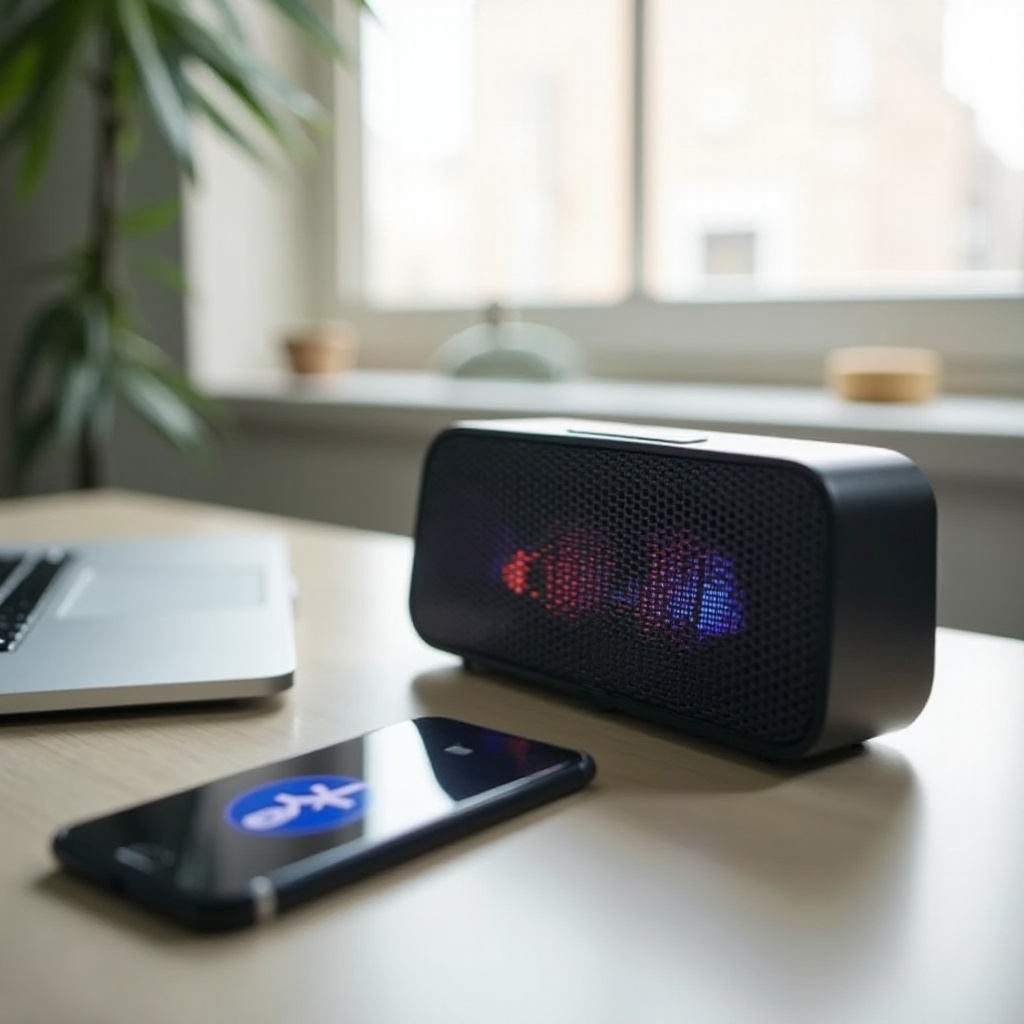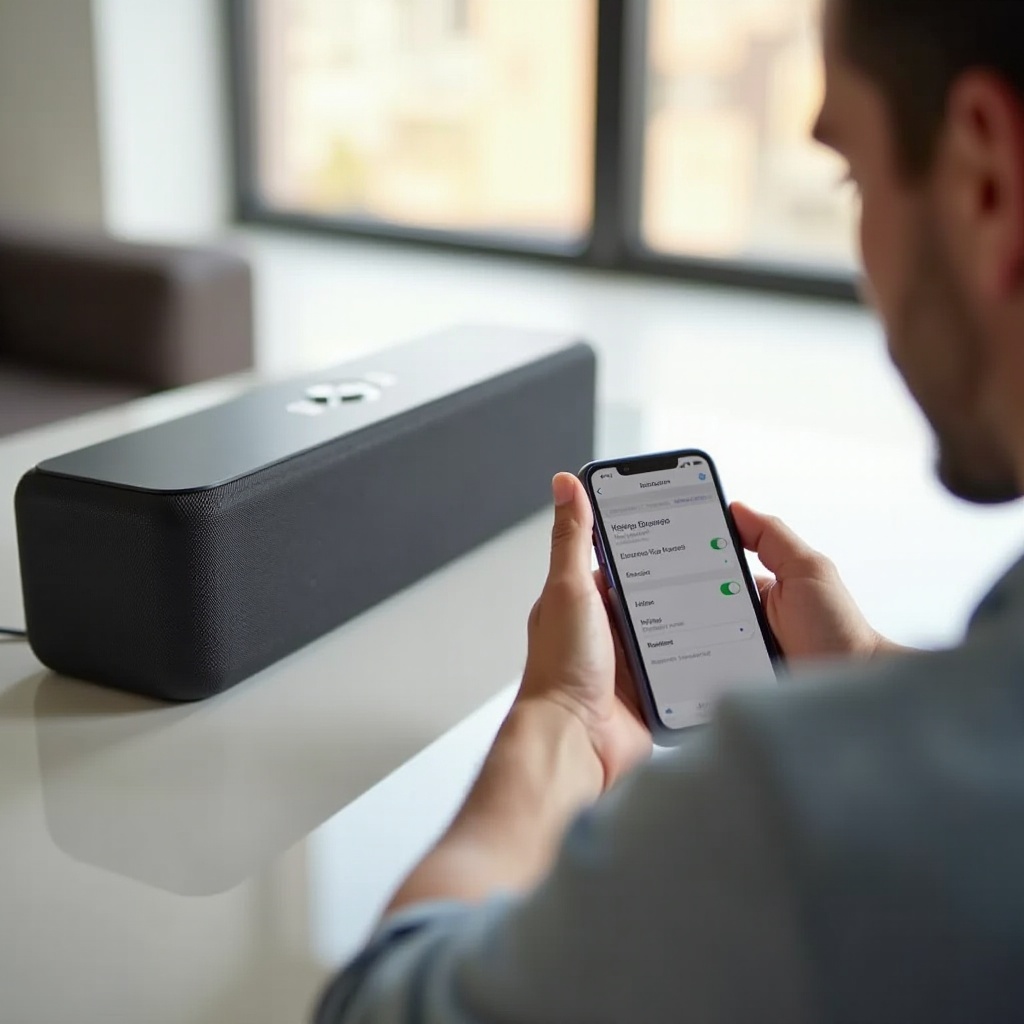Introduction
It can be incredibly frustrating when your Bluetooth speaker connects but refuses to emit any sound. You’ve done everything right to pair it, and you see the connection icon, yet the silence is maddening. This common issue can confuse many users, especially when everything seems perfectly in order. By identifying the root cause, you can avoid unnecessary stress and find a solution. Let’s delve into the problem and discover how you can effectively troubleshoot it.

Common Causes of No Sound in Bluetooth Speakers
There are a variety of reasons why your connected Bluetooth speaker might not be producing sound. Once you are aware of these potential issues, you can address and resolve the problem more efficiently.
Volume and Mute Settings
One of the most common reasons is something as simple as the volume setting on either your speaker or the audio source device. At times, the volume might be set too low or muted entirely, leading to no sound output.
Audio Source Issues
At times, the problem might lie with the audio source itself. Issues within the application or media file you’re trying to play, or a lack of output from the source, can impact sound production on the speaker.
Bluetooth Connectivity Problems
Even when the Bluetooth connection seems stable, interference or a weak signal can cause disruptions in audio transmission, leading to silence.
Understanding these common issues is key to troubleshooting effectively. However, before moving on to more intricate solutions, starting with basic troubleshooting steps is always a good strategy.

Basic Troubleshooting Steps
If your Bluetooth speaker is connected but isn’t producing sound, follow these basic steps to potentially resolve the issue.
Checking Device and Speaker Settings
- Volume Check: Always ensure that the volume is turned up on both the speaker and the device it is connected to. Make sure neither is muted.
- Playback Device: Verify that the Bluetooth speaker is set as the active playback device on your connected equipment.
Restarting and Reconnecting Devices
Sometimes, simply restarting the devices can resolve connectivity hiccups:
1. Turn off both the speaker and the audio source device.
2. Restart both devices and reconnect them via Bluetooth.
Testing with a Different Audio Source
Connect the speaker to another device or try playing a different audio file to eliminate the possibility of a faulty audio source causing the issue.
By implementing these basic steps, you might resolve the sound issue, but if it still persists, it could be time to try some advanced troubleshooting approaches.
Advanced Troubleshooting Techniques
Should the issue persist after basic troubleshooting, exploring some advanced techniques could help restore sound from your Bluetooth speaker.
Firmware Updates for Speakers
Outdated firmware could be causing compatibility issues:
1. Visit the manufacturer’s website to check for any available firmware updates for your specific speaker model.
2. Follow the given instructions to update the firmware.
Analyzing Compatibility Issues
Incompatibility between the Bluetooth versions on your device and speaker can be an issue. Ensure both are compatible, and if your device supports backward-compatible connections, enable this feature in its settings.
Addressing Interference and Signal Blockages
- Distance: Keep an appropriate distance between the speaker and the connected device.
- Interference: Minimize other functioning Bluetooth devices or WLAN signals that could cause interference.
- Obstructions: Remove any physical barriers affecting the signal between the speaker and the connected device.
These advanced techniques address more complex problems that might be causing your Bluetooth speaker’s silence. Once you have navigated these challenges, maintaining your technology’s performance can prevent further occurrences.

Maintaining Optimal Performance for Bluetooth Speakers
Regular upkeep is essential for keeping your Bluetooth speaker functioning optimally and preventing potential sound issues.
Regular Maintenance Practices
- Clean Regularly: Make sure no dust or debris blocks the speaker grills.
- Careful Handling: Safeguard the speaker from drops or damage that could affect its components.
Updating Bluetooth Software
Keeping your device’s Bluetooth software current ensures you have seamless connectivity and compatibility with your speaker.
Best Practices for Preventing Future Issues
- Connection Tests: Periodically check the connection and sound quality.
- Storage Environment: Store in a dry, safe location to avoid moisture exposure or extreme temperatures.
By following these practices, you can enhance the longevity and performance of your Bluetooth speaker, ensuring an uninterrupted audio experience.
Conclusion
Unraveling the mystery of why your Bluetooth speaker connects but remains soundless involves understanding various factors and applying practical solutions. From preliminary checks to advanced troubleshooting, addressing potential causes restores functionality to your speaker. Regular maintenance tips help in preserving sound quality and maintaining enduring performance.
Frequently Asked Questions
Why is there a delay in sound on my Bluetooth speaker?
A delay usually stems from latency in Bluetooth transmission. Choose speakers and devices equipped with low latency technology to minimize this issue.
Can my Bluetooth speaker connect to multiple devices at once?
Certain Bluetooth speakers have multi-device connection capabilities. Check your speaker’s specifications or manual for more information.
How can I improve the Bluetooth connection range?
Ensure a clear line of sight between devices and reduce interference from walls or other electronics to improve the connection range.